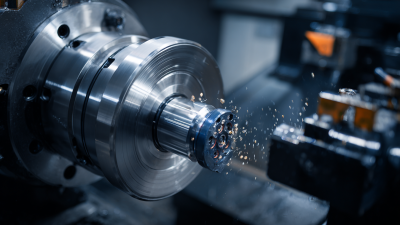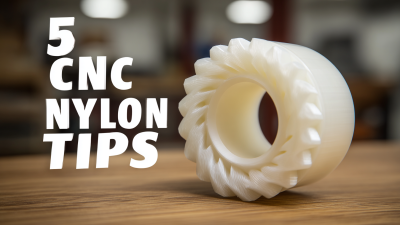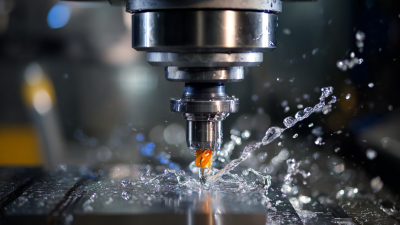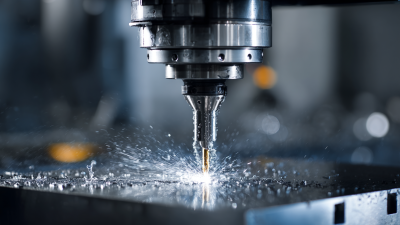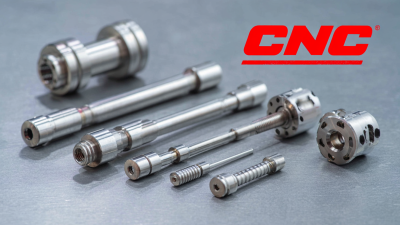
- sales@bjbod.com
- Mon - Sat at 7:00AM to 9:00PM

Choosing the right CNC clamp is crucial for the success of your machining projects, as the right clamping solutions can significantly enhance precision, efficiency, and safety. With a myriad of options available in the market, understanding the key factors that influence the selection of CNC clamps is essential for makers and manufacturers alike. This article presents ten important facts and tips to guide you in choosing the perfect CNC clamp for your specific applications. From material considerations to design features, these insights will help you make informed decisions that can optimize your machining process. Whether you're a seasoned professional or a newcomer to CNC machining, knowing how to select the right clamp can lead to better results and greater satisfaction in your projects. Join us as we delve into the essential elements that will empower you to make the best choice for your CNC clamping needs.

CNC clamps play a crucial role in precision engineering, serving as the backbone for effective and accurate machining processes. As outlined by the 2022 Precision Engineering Study, nearly 70% of machining errors are attributed to improper workpiece clamping. This statistic underscores the importance of selecting the right clamp to maintain the integrity of the workpiece throughout various CNC operations. High-quality clamps not only ensure stability but also enhance the overall productivity of the machining process, reducing the cycle time by up to 15%, according to industry reports from the CNC Manufacturing Association.

In addition to promoting accuracy, CNC clamps are essential in preventing vibration, which can lead to tool wear and dimensional inaccuracies. Studies indicate that using the appropriate clamp can minimize vibration by as much as 30%, thereby extending tool life and improving the finish quality of the final product. Engineers and machinists must consider factors such as material, load capacity, and compatibility with the CNC machine when selecting a clamp. Investing in the right CNC clamp not only enhances precision engineering but also contributes significantly to the efficiency and quality of manufactured components.
When selecting CNC clamps for different materials, several key factors come into play. First and foremost, the material of both the workpiece and the clamp itself should be considered. According to a report by the Market Research Future, the demand for materials such as aluminum and composites in CNC machining is expected to grow by 7% annually. Aluminum, being lightweight yet sturdy, requires clamps that offer a secure hold without damaging the material. Utilizing clamps made from high-strength steel or even advanced polymers can prevent deformation during machining operations.

Another critical consideration is the clamping mechanism. CNC clamps vary from manual to automated systems, and choosing the right type can impact both efficiency and precision. Industry studies suggest that automated clamps can reduce setup times by up to 30%, particularly in high-volume production environments. For softer materials, such as plastics, softer jaw pads should be employed to distribute the clamping force evenly and minimize surface marks. Conversely, for harder materials like steel, more robust clamp designs that can withstand higher torque are essential to ensure stability and accuracy during machining.
When selecting a CNC clamp, evaluating clamp strength and load capacity is crucial for ensuring optimal performance in your projects. Industry standards play a significant role in this evaluation, as they define the parameters and testing methods necessary to ascertain the reliability and sturdiness of clamps. Common standards such as ISO and ANSI provide guidelines on load capacities, ensuring that clamps can withstand the forces encountered during machining operations. Familiarizing yourself with these metrics helps you choose clamps that meet or exceed the requirements for your specific applications.
In addition to understanding industry standards, it’s essential to consider the material and design of the clamp. For instance, clamps made from high-strength alloys or those with reinforced designs tend to offer superior load-bearing capabilities. Factors like the clamping mechanism and the surface area in contact with the workpiece can also influence performance. By assessing these elements alongside standardized metrics, you can make informed decisions, ensuring that the clamps you select will provide both reliability and safety throughout your machining processes.
When undertaking CNC machining projects, the stability of the workpiece is paramount for achieving precision. The design of the clamp used plays a critical role in maintaining this stability. A well-designed clamp can distribute force evenly across the workpiece, preventing any movement that could compromise accuracy. In contrast, poorly designed clamps may lead to vibrations and shifting, resulting in subpar machining results.
When choosing a CNC clamp, it's important to consider materials and grip strength. For example, clamps made from high-strength steel provide durability and a strong grip, essential for holding heavier workpieces securely. Additionally, look for clamps that feature adjustable jaws, as they allow for versatility when working with different shapes and sizes—ensuring your workpiece stays stationary during machining.
**Tip:** Always assess the clamp’s design features such as locking mechanisms and surface contact area, as these can significantly influence your machining accuracy. Another tip is to ensure that the clamp is compatible with your CNC machine setup, as this will help you avoid any compatibility issues that could affect your project.
| Feature | Description | Impact on Stability | Recommended Type |
|---|---|---|---|
| Clamp Material | Aluminum, Steel, or Plastic | Durable materials increase workpiece security. | Steel for heavy-duty uses, Aluminum for lightweight. |
| Clamp Design | Fixed or Sliding | Design affects how well the workpiece is held in place. | Fixed clamps for static workpieces, Sliding for adjustability. |
| Jaw Width | Varies with application | Wider jaws distribute force more evenly. | Wider jaws for larger workpieces. |
| Clamping Force | Amount of force applied | Higher force can better hold the workpiece. | Heavy-duty clamps for high clamping force. |
| Versatility | Adjustable and multifunctional | Greater versatility provides better compatibility. | Adjustable clamps for diverse applications. |
When selecting the right CNC clamps for your projects, it's essential to focus not only on their functionality but also on their maintenance. Proper maintenance and care can significantly extend the life of your clamps, ensuring they remain reliable and efficient in supporting your machining processes. Regular inspections for wear and tear, along with timely lubrication, can prevent malfunctions that might stall production.
One crucial tip for maximizing the longevity of your CNC clamps is to store them properly. Keeping clamps in a designated, dry area helps prevent corrosive damage that can arise from exposure to moisture. Additionally, consider cleaning your clamps after each use to remove metal shavings, dust, or oil that may accumulate. This practice not only extends the life of the clamps but also ensures they perform at their best in future projects.
Lastly, maintaining a consistent lubrication routine can make a significant difference. Use appropriate lubricants specified for the materials of your clamps and the environment they will operate in. This routine will help in reducing friction, preventing rust, and ensuring smooth operation during assembly and disassembly. By adhering to these best practices, you can keep your CNC clamps in top condition for years to come.
